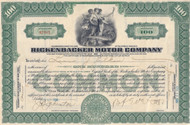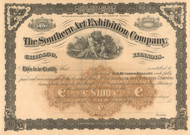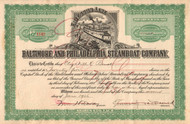Categories
Categories
Brooklyn Exhibition Company 1926 (Ebbets Field boxing and football)
Brooklyn Exhibition Company 1926 (Ebbets Field boxing and football)
Product Description
Brooklyn Exhibition Company stock certificate circa 1926
Great vignette and company sports history with this piece. The top engraving features a seated female figure in front of shipping and New York city scene with Exhibition truck. Unissued and not cancelled. Circa 1926 from incorporation records.
The company was formed to bring boxing and football to Ebbets Field in 1926. Humbert Fugazy and David Driscoll formed the Brooklyn Exhibition Company in a two pronged effort to bring football and boxing to Ebbets Field. In addition, an owner of the Brooklyn Horseman Football Team, which also played at Ebbets Field, Fugazy put on bouts throughout the 1920's and early 30's. Fugazy was a visionary for the attendance potential of outdoor fights, and he was correct as boxing at Ebbets Field continued to draw large crowds. 1926 was a breakout year with the record setting July crowd of 42,000 followed by another 35,000 in October that saw Jack Sharkey defeat Henry Wills.
Fugazy also brought some unique characters to Ebbets Field, including Monte Munn, a Nebraska legislator who fought George Godfrey in 1927. Described as a slow, clumsy fighter that telegraphs his blows like an expert Western Union operator, Munn had an impressive record against unimpressive competition. Tired of criticism of his accomplishments, Munn was stepping up in class against Godfrey, who finished his career with a 97-20-3 record. The referee called off the bout in the fourth round, as Munn was hopelessly outclassed.
Boxing continued to be popular at the Dodger's home throughout the 1920's. Although fights continued in the 1930's, they became less frequent and tapered off in 1936., an effect of the Depression. Fights would continue intermittently in the 40's and after World War 2.
 Loading... Please wait...
Loading... Please wait... 








